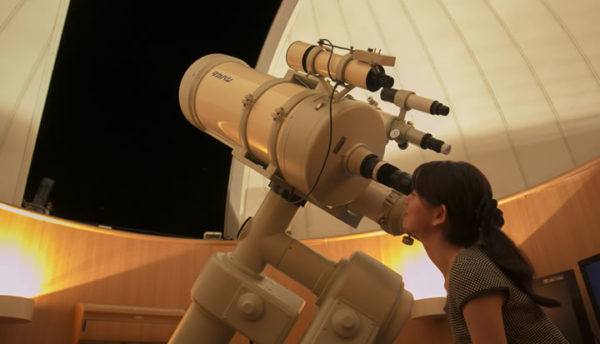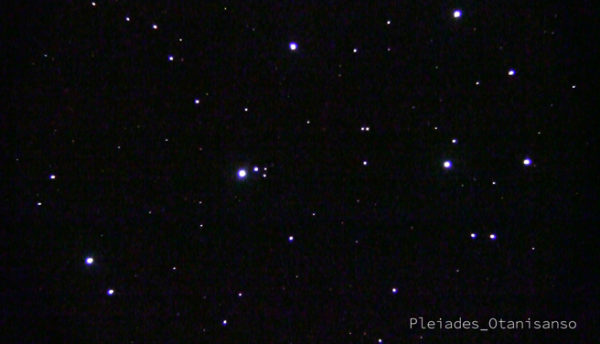- Astronomical Observatory
- 2020/01/29
【December in the Observatory】It’s a Christmas celebration in the stars, too! Come enjoy observing the winter skies with the Geminids meteor shower and the Orion nebula!
The Orion Nebula, the Geminids meteor shower, the Pleiades. How many can you see? The December skies can be enjoyed even with the naked eye
 Hello, this is the Otani Sanso Astronomical Observatory Dome.Today we’ll be discussing what’s visible in Nagato Yumoto Onsen’s night skies in December, 2019. (Image: A photograph of the Orion Nebula, taken through the telescope at Otani Sanso’s astronomical observatory dome)
Hello, this is the Otani Sanso Astronomical Observatory Dome.Today we’ll be discussing what’s visible in Nagato Yumoto Onsen’s night skies in December, 2019. (Image: A photograph of the Orion Nebula, taken through the telescope at Otani Sanso’s astronomical observatory dome)
The Orion Nebula, shaped like a bird taking flight, and the Geminid meteor shower, full of shooting stars on which to wish! These are the shimmering lights that brighten the chilly winter skies.
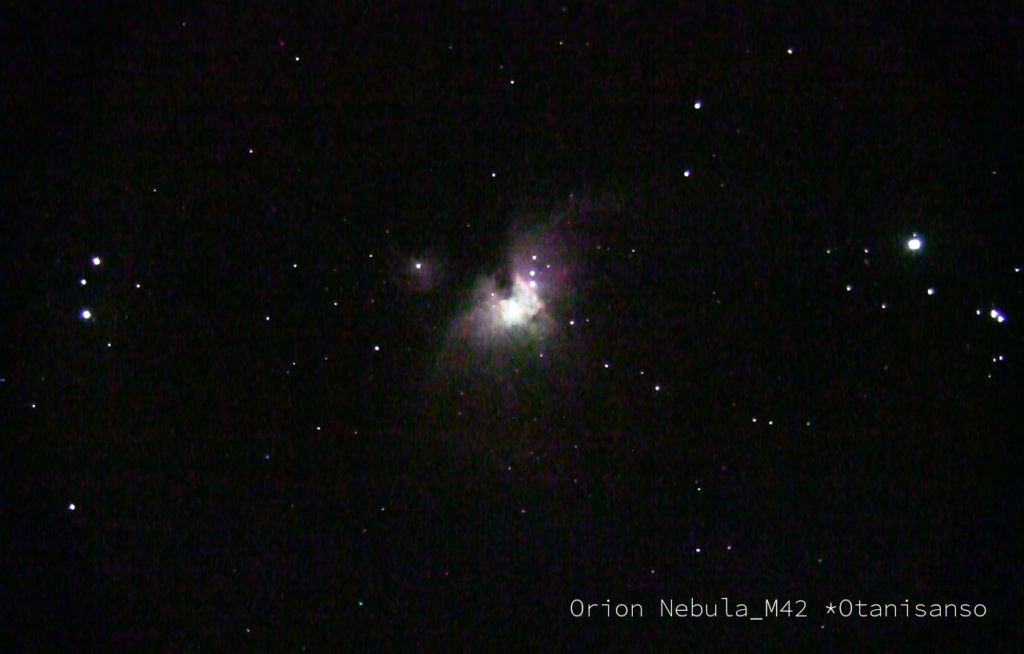 December has quite the lineup of constellations. If you look up to the eastern sky, you’ll be able to see Taurus, Orion, Gemini, and the Pleiades. Of especial note is the Geminid meteor shower. It’s said that the shower will reach its peak on December 15 (Sun), and there wil be chances to see it between the 14th and 15th. This year, though, the light of the waning moon just after it becomes full is expected to make the meteor shower difficult to see. That being said, the appearance of shooting stars in the chilly night sky is a romantic sight. The meteors should begin to appear after 8 p.m., and will be at their best for viewing after 9 p.m., so why not bring your wish and come out to see the show? In the winter skies, too, there’s much to be seen with the naked eye, like the Orion nebula and the Pleiades (Subaru). In particular, in the Southern Sky, you may notice the three stars of the Orion nebula. It’s noted to look like a bird taking flight. Then, as during last month, you’ll see Taurus and the Pleiades. This groups of young stars are known as open clusters, and six are viewable with the naked eye—7 for those with particularly good eyesight. It is said that these stars were used as a vision test amongst the soldiers of ancient Greece.
December has quite the lineup of constellations. If you look up to the eastern sky, you’ll be able to see Taurus, Orion, Gemini, and the Pleiades. Of especial note is the Geminid meteor shower. It’s said that the shower will reach its peak on December 15 (Sun), and there wil be chances to see it between the 14th and 15th. This year, though, the light of the waning moon just after it becomes full is expected to make the meteor shower difficult to see. That being said, the appearance of shooting stars in the chilly night sky is a romantic sight. The meteors should begin to appear after 8 p.m., and will be at their best for viewing after 9 p.m., so why not bring your wish and come out to see the show? In the winter skies, too, there’s much to be seen with the naked eye, like the Orion nebula and the Pleiades (Subaru). In particular, in the Southern Sky, you may notice the three stars of the Orion nebula. It’s noted to look like a bird taking flight. Then, as during last month, you’ll see Taurus and the Pleiades. This groups of young stars are known as open clusters, and six are viewable with the naked eye—7 for those with particularly good eyesight. It is said that these stars were used as a vision test amongst the soldiers of ancient Greece.
What are the Pleiades
The Pleiades are an open star cluster in the constellation of Taurus, and are well-known in Japan as the cluster of “Subaru.” It is visible to the naked eye, and is familiar to many as a feature of the winter night sky. It’s especially marked for its blue-white shimmer, and is a cluster of young, hot stars. It is said that the Pleiades formed some 60,000,000 years ago. It is also thought, however, that the stars in this cluster will be short-lived, due to the rapid fusion reactions occuring within the stars, with will likely result in the stars turning supernova in 10,000,000 years.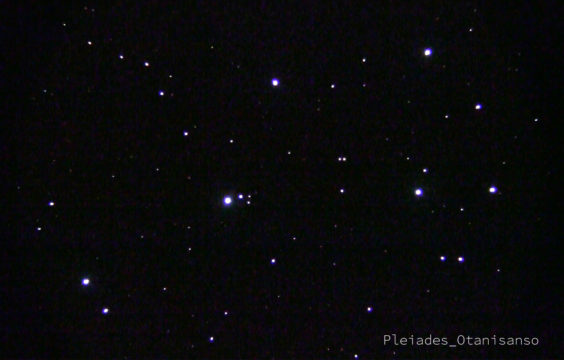
See details about the Pleiades star cluster
Legends surrounding the stars of December: the Geminids meteor shower
The Geminid meteor shower is one of the three largest meteor showers, and every year between around December 4th – 17th (the peak will be around December 14th) a large number of meteors become visible. The Geminid meteor shower is characterized by being visible throughout the night, with the best meteor-viewing conditions occuring after 9 p.m. If you want to see meteors falling from directly above, we suggest viewing the shower at 2 a.m, when the meteors reach their zenith. If you view the meteor shower during its peak from a dark location, you should be able to see about 45 meteors over the course of an hour. This being said, as introduced above, the 2019 Geminid meteor shower will occur with the bright light of the waning moon on either side, so it doesn’t seem that it will have optimal viewing conditions (Under good conditions: 15-20 per hour). Why not come out in some especially warm clothing, and enjoy a long period of stargazing just before Christmas?Reference: National Astronomical Observatory of Japan Website, “December Topics in Starry Skies” (Japanese Only)
Information about the stars in December
Schedule of Expected Stellar Observations
- December 1 (Sun) – 2 (Mon): Pleiades (Subaru), the Perseus Double Cluster, Orion nebula
- December 3 (Tue) – 15 (Sun): the Moon, Pleiades (Subaru), Orion nebula
- Decemebr 16 (Mon) – 31 (Tue): Pleiades (Subaru), the Perseus Double Cluster, Orion nebula
Star-Gazing Topics in December
- December 12 (Thu) … Full Moon
- December 15 (Sun) … Peak of the Geminid meteor shower
- December 22 (Sun) … Winter solstice
- December 26 (Thu) … New Moon, Partial solar eclipse
Please check the National Astronomical Observatory of Japan website for sunset times in Yamaguchi Prefecture. (See: National Astronomical Observatory of Japan Website)
Making a Reservation at the Astronomical Observatory
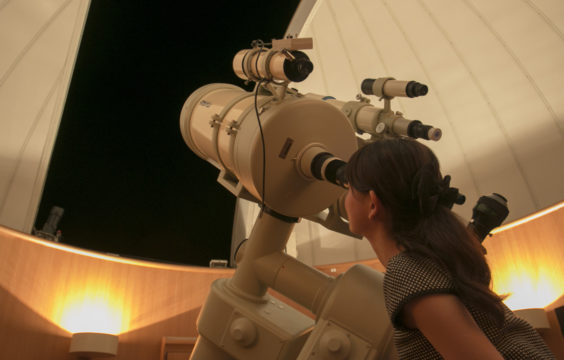
Details
- ・Observatory Hours… 7:30 p.m. – 10:10 p.m. ・Closed on… Every Tuesday ・Location… Otani Sanso Roof (Just beside the gallery on the 8th floor) ・Price… Free for overnight guests (Viewings available to those who reserve first) ・Using the Observatory… Viewings are available to those who reserve first (12 seats per viewing)
Observation Times
- 7:30 p.m., 7:50 p.m. 8:10 p.m., 8:30 p.m., 8:50 p.m. 9:10 p.m., 9:30 p.m., 9:50 p.m.
- 20:10、20:30、20:50
- 21:10、21:30、21:50
How to Make a Reservation
Please inform us of your desired reservation time from the times listed above (Please tell us via telephone, or write it in the “requests” field) *You may not be able to participate in a viewing if a time slot is fully booked, or due to weather conditions. *Should you be unable to participate in a viewing due to weather conditions, you will be able to see a video from a past viewing.See information from the astronomical observatory dome
■Frequently Asked Questions "Why is there an astronomical observatory on the roof of Otani Sanso?" The president of Otani Sanso, a great fan of the poems of Nagato/Senzaki-born Kaneko Misuzu, built the observatory out of a desire to "share the beautiful stars of Nagato with our guests, too." In fact, it was through a chance meeting via the Kaneko Misuzu Exchange Association that the president met with Dr. Haoru Saji, who greatly affected the president with the beauty of the stars he could see from the observatory at Tamagawa University even during the daytime. "There's much more than your eyes can see," Dr. Saji told him. "Let's take a look at the daytime stars." When you look up at the starry skies of Nagato, here, surrounded by nature, we hope you'll make memories to take home with you that you can look back on fondly.
Night Sky Trivia
The Speed of Light
- Light moves at a speed of approximately 300,000 km per second (7.5 revolutions around the Earth), and can cover 9.46 trillion km in a year.
- It takes light from the sun 8 minutes and 19 seconds to reach the earth.
- It takes 8 minutes and 19 seconds for light from the sun to reach the Earth.
Distances in Space
- Because space is so vast, we use “light years” and “astronomical units (AU)” to describe the distances between stars.
- 1 light year = the amount of distance light can travel in one year (9.5 trillion km)
- 1 astronomical unit = the distance between the sun and the Earth (approx. 150 million km)
Earth Time
- There are 24 hours in one day, but it takes 23 hours and 56 minutes for a rotation of the earth, leaving a margin of 4 minutes.
- The reason we have “leap years” is because the Earth’s orbital period around the sun is just shy of 365 Earth days.
- 1 rotation of the Earth (23 hours 56 minutes) = 400 m/sec
- 1 revolution of the Earth (365 days) = 30 km/sec
If you’d like to see more information about the night skies, the National Astronomical Observatory of Japan is extremely interesting. Please take a look.
